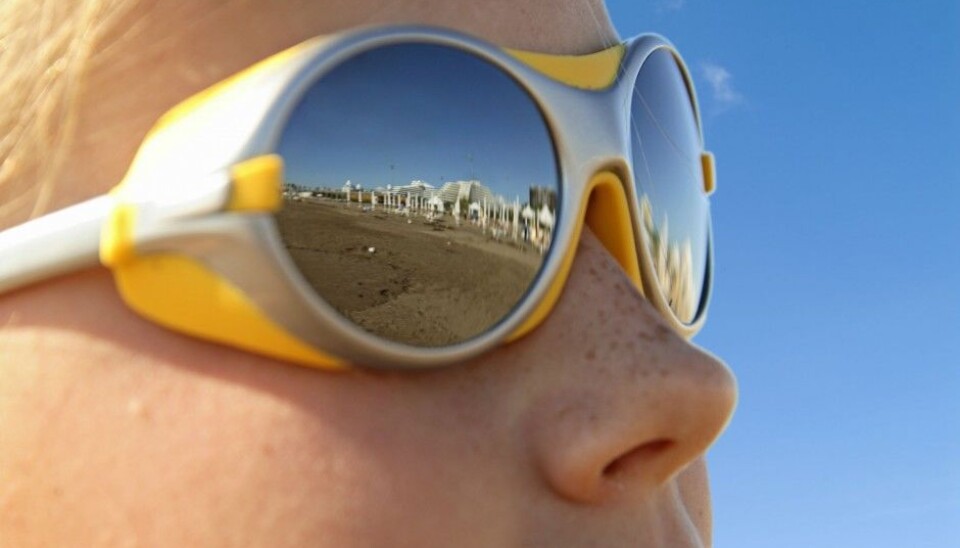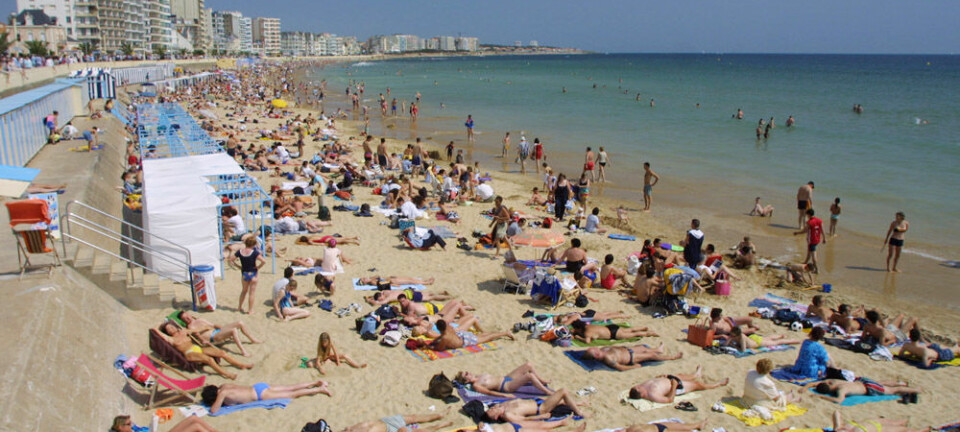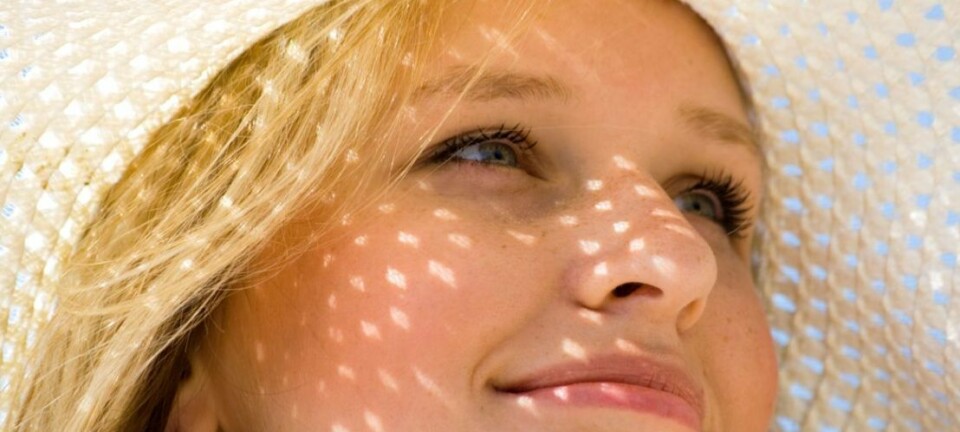
What’s the sun screen of the future?
We could be downing pills rather than smearing ourselves with creams and lotions in a few years. Or we could count on bacteria from a deep fjord to protect us from the harmful rays of the sun.
Denne artikkelen er over ti år gammel og kan inneholde utdatert informasjon.
Summer approaches, and pallid Northern European skins need to be protected by fresh coats of sunblock several times a day.
Many of us get tired of rubbing ourselves in with sticky emulsions of chemicals. One of our readers queries: What’s the sunburn protection of the future?
Lill Tove Nilsen, a researcher at the Norwegian Radiation Protection Authority, has the answer:
A watch that insists on some shade
“Some people can’t use tanning lotions and sunblock. Others simply dislike them. So smart innovations are in demand,” says Nilsen.

She thinks an optimal solution would be a form of protection calibrated to match any solar radiation we get. It would be tuned to our own personal capacities for exposing our skin to the sun without doing ourselves serious harm.
“There are already UV-apps that allow you to enter information about yourself and your present location. These can then prompt you when it’s time to get out of the sunshine and into the shade.”
You can also buy UV watches that have more or less the same function as the apps ― they warn you when enough is enough.
The scientist expects more such devices on the market in the near future.
“Getting out of the sun is still the best protection,” says Nilsen.
This doesn’t mean she thinks we should sit inside from Spring to Fall. A little sun is good for us and makes us healthier and happier.
Smart clothes
According to Nilsen we could soon be using smart clothes made of soft, pliable materials that provide UV protection.
She adds that normal clothes already give such protection if they aren’t too loosely woven.
Nilsen thinks that in addition to clothes and apps, we will be switching our tubes and bottles of creams and lotions with tablets ― the kind you swallow.
Sunblock pill
“It’s conceivable that a pill could be made which helps our internal defence system,” says Nilsen.
The effort will hinge upon new knowledge about all the body mechanisms that enable rays from our home star to injure us. It means we will find a way of protecting ourselves from the inside. This will also require a long testing period to ensure that we don’t swallow something that will do us more harm than good.
So don’t look for the sunblock pills at your local pharmacy in the near future.
Three reminders
For the time being we need to keep using those creams and ointments and apps.
“We have to continue relying on our own clever decisions,” says Nilsen.
Here are the researcher’s three main recommendations for anyone who plans to get some Easter sun:
- Clothes, sunglasses and headwear that give ample protection.
- Ensure you are in a place where some shade is available, and use it now and then.
- For now, sunblock is all we have to protect the cheeks and nose.
Sunblock products are constantly being improved. Norwegian researchers are working with bacteria which might save us from skin cancer.
Bacteria against cancer
Ultraviolet (UV) rays with their long wavelengths can trigger several types of skin cancers. We now have sunblock lotions that screen against the known UVA and UVB rays. But we have nothing like this to protect us against what is called UV blue light.
UVA rays have wavelengths from 320 to 400 nanometres (nm). UV blue light is in the wavelength range from 400nm and up to 475nm. It is called blue because it is right on the border of being visible light.
Norwegian scientists have discovered a type of bacteria in the Trondheim Fjord which can protect against these particular rays.
The bacteria contain a useful variation of the organic pigment known as carotenoids. The scientists are now cultivating these bacteria and extracting this organic compound. The idea is to add it to sunblock ointments and creams.
“I think these sunblock products will be on the market in five years, at the earliest. Perhaps it will be in ten years,” says Trygve Brautaset. He is a professor at the Norwegian University of Science and Technology in Trondheim and the leader of the bacteria project.
--------------------------------
Read this article in Norwegian at forskning.no
Translated by: Glenn Ostling

































